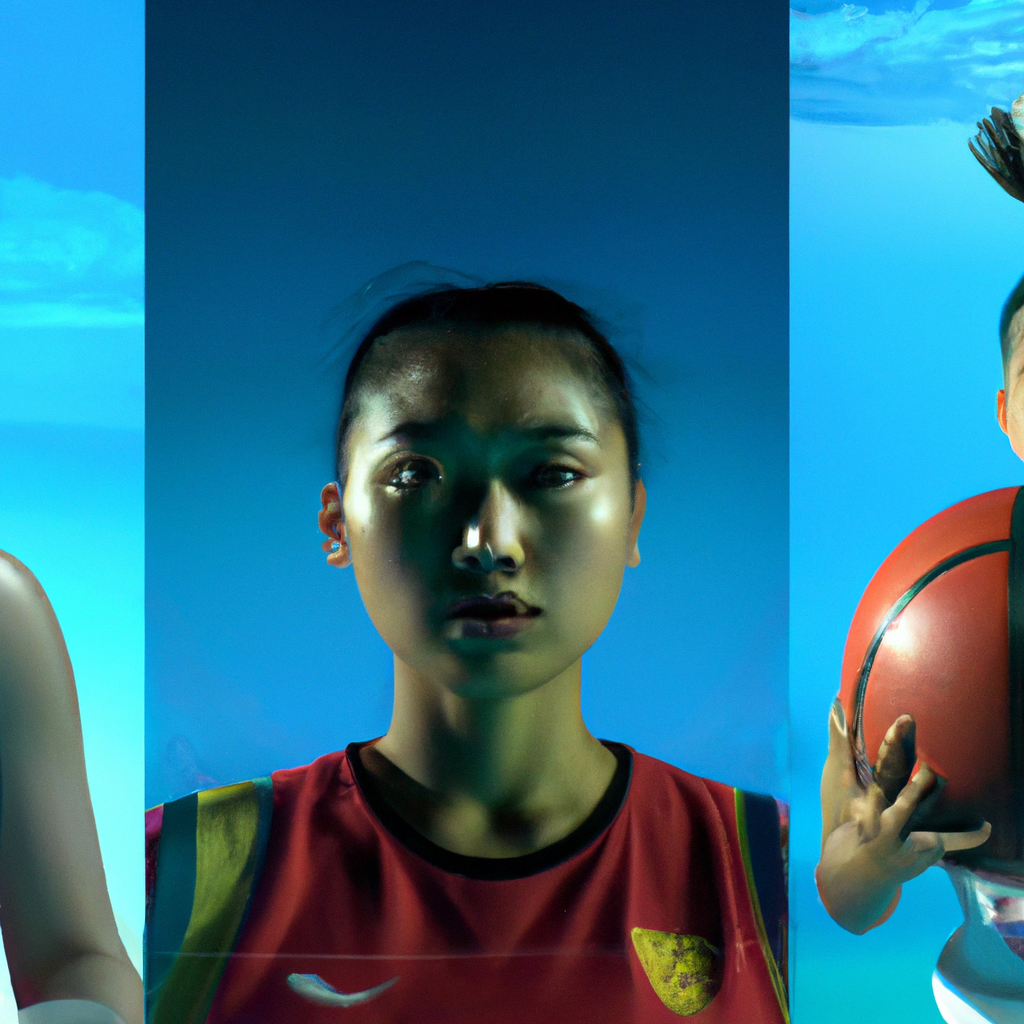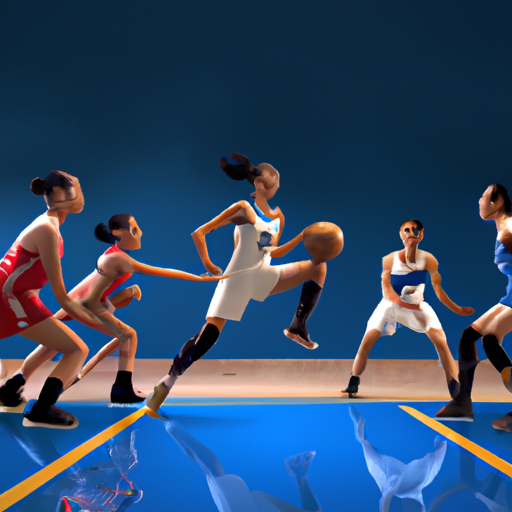Asiad-bound Gilas men, women set for joint practice

Key Players to Watch Out for in the Asiad-bound Gilas Men’s Team
The Asiad-bound Gilas men’s and women’s teams are gearing up for a joint practice session in preparation for the upcoming Asian Games. This marks a significant milestone for Philippine basketball as both teams come together to train and strategize for the prestigious tournament.
One key player to watch out for in the Asiad-bound Gilas men’s team is Dwight Ramos. The 6’5″ guard/forward has been making waves in the international basketball scene with his impressive performances. Ramos, who currently plays for the Toyama Grouses in the B.League in Japan, brings a unique skill set to the team with his scoring ability, defensive prowess, and basketball IQ.
Another standout player in the Gilas men’s team is Kai Sotto. The 7’2″ center has been making a name for himself in the basketball world with his size, skill, and potential. Sotto, who recently signed with the Adelaide 36ers in the Australian NBL, is expected to be a dominant force in the paint for Gilas. His ability to protect the rim, rebound, and score inside makes him a valuable asset for the team.
Joining Ramos and Sotto in the Gilas men’s team is Thirdy Ravena. The 6’2″ guard/forward has been a consistent performer for the team with his scoring, playmaking, and defensive abilities. Ravena, who currently plays for the San-En NeoPhoenix in the B.League, is known for his high basketball IQ and leadership on the court. His versatility and energy make him a key player to watch out for in the upcoming Asian Games.
On the women’s side, one player to keep an eye on is Jack Animam. The 6’2″ center has been a dominant force in the local and international basketball scene with her size, strength, and skill. Animam, who currently plays for Shih Hsin University in Taiwan, is known for her rebounding, shot-blocking, and scoring inside. Her presence in the paint will be crucial for the Gilas women’s team as they aim to make a statement in the Asian Games.
Another standout player in the Gilas women’s team is Janine Pontejos. The 5’6″ guard has been a sharpshooter for the team with her three-point shooting and scoring ability. Pontejos, who currently plays for the Perlas Pilipinas in the Women’s National Basketball League, is known for her quick release and accuracy from beyond the arc. Her shooting touch will be a valuable asset for the team as they look to compete against the best in Asia.
As the Asiad-bound Gilas men’s and women’s teams come together for a joint practice session, fans can expect to see a display of talent, teamwork, and determination. With key players like Dwight Ramos, Kai Sotto, Thirdy Ravena, Jack Animam, and Janine Pontejos leading the way, both teams are poised to make a strong showing in the upcoming Asian Games. The joint practice session will be a crucial opportunity for the teams to fine-tune their skills, build chemistry, and prepare for the tough competition ahead. Philippine basketball fans can look forward to an exciting and competitive showing from the Asiad-bound Gilas men’s and women’s teams as they represent the country on the international stage.
Strategies and Tactics for Success in the Joint Practice of Gilas Men and Women

The Philippine national basketball teams, both men and women, are gearing up for the upcoming Asian Games in Hangzhou, China. As part of their preparations, the Gilas men and women are set to hold joint practice sessions to fine-tune their skills and strategies for the tournament. This marks a significant step towards gender equality in Philippine basketball, as the two teams will have the opportunity to train together and learn from each other.
Joint practice sessions offer a unique opportunity for the Gilas men and women to collaborate and share their knowledge and expertise. By training together, the players can develop a better understanding of each other’s playing styles and tendencies, which can ultimately lead to improved teamwork and cohesion on the court. This collaborative approach can also help the teams identify and address any weaknesses or areas for improvement, as they work towards a common goal of success in the Asian Games.
One of the key benefits of joint practice sessions is the opportunity for the players to challenge themselves against different opponents. By facing off against each other in practice, the Gilas men and women can push each other to elevate their game and improve their skills. This competitive environment can help the players build confidence and resilience, as they prepare to face tough competition in the Asian Games.
In addition to on-court skills, joint practice sessions also provide an opportunity for the players to work on their mental toughness and resilience. By training together, the Gilas men and women can learn from each other’s experiences and perspectives, and support each other through the ups and downs of the training process. This camaraderie and mutual support can help the players stay focused and motivated, even in the face of challenges and setbacks.
Furthermore, joint practice sessions can help the coaching staffs of both teams collaborate and share their knowledge and expertise. By working together, the coaches can develop a unified game plan and strategy for the Asian Games, based on the strengths and weaknesses of both teams. This collaborative approach can help the Gilas men and women maximize their potential and perform at their best when it matters most.
As the Gilas men and women gear up for the Asian Games, joint practice sessions offer a valuable opportunity for them to come together as a unified team. By training together, the players can build trust and camaraderie, and develop a shared sense of purpose and commitment to success. This collaborative approach can help the Gilas men and women achieve their goals and represent the Philippines with pride and determination on the international stage.
In conclusion, joint practice sessions are a valuable tool for the Gilas men and women as they prepare for the Asian Games. By training together, the players can develop a better understanding of each other’s playing styles and tendencies, challenge themselves against different opponents, and build mental toughness and resilience. This collaborative approach can help the teams maximize their potential and perform at their best when it matters most. As the Gilas men and women come together to train and prepare for the Asian Games, they are setting themselves up for success on the international stage.
Potential Impact of Joint Practice on the Performance of Asiad-bound Gilas Women’s Team
The Asiad-bound Gilas men and women’s teams are gearing up for a joint practice session in preparation for the upcoming Asian Games. This marks a significant moment for Philippine basketball as it showcases the unity and collaboration between the men’s and women’s teams. The joint practice is expected to have a positive impact on the performance of the Asiad-bound Gilas women’s team, providing them with valuable experience and exposure to high-level competition.
The joint practice will allow the women’s team to train alongside their male counterparts, giving them the opportunity to learn from each other and improve their skills. This cross-gender training can be beneficial for both teams as they can share strategies, techniques, and insights that can help elevate their game. The men’s team, with their experience and expertise, can provide valuable guidance and mentorship to the women’s team, helping them to develop their skills and confidence on the court.
Moreover, the joint practice will also help the women’s team to adapt to the physicality and intensity of the game, which is often a challenge for female athletes competing at the international level. By training with the men’s team, the women’s team can simulate game-like situations and improve their physical conditioning, allowing them to better prepare for the tough competition ahead. This exposure to a higher level of play can help the women’s team to raise their performance and compete more effectively against their Asian counterparts.
Additionally, the joint practice will foster a sense of camaraderie and teamwork between the men’s and women’s teams, creating a supportive and inclusive environment for both groups. This collaboration can help to build trust and unity among the players, leading to better communication and coordination on the court. By working together towards a common goal, the teams can develop a strong sense of solidarity and motivation, which can translate into improved performance and results.
Furthermore, the joint practice can also help to raise the profile of women’s basketball in the Philippines and promote gender equality in sports. By showcasing the talent and dedication of the women’s team alongside the men’s team, the joint practice can help to break down stereotypes and barriers that often limit the opportunities for female athletes. This visibility can inspire young girls to pursue their passion for basketball and empower them to dream big and aim for success in the sport.
In conclusion, the joint practice between the Asiad-bound Gilas men and women’s teams holds great potential to positively impact the performance of the women’s team. By training together, sharing knowledge and experiences, and fostering teamwork and unity, the women’s team can gain valuable skills and confidence that can help them to compete at their best in the upcoming Asian Games. This collaboration not only benefits the players but also promotes gender equality and inclusivity in Philippine basketball, paving the way for a brighter future for women’s sports in the country.

